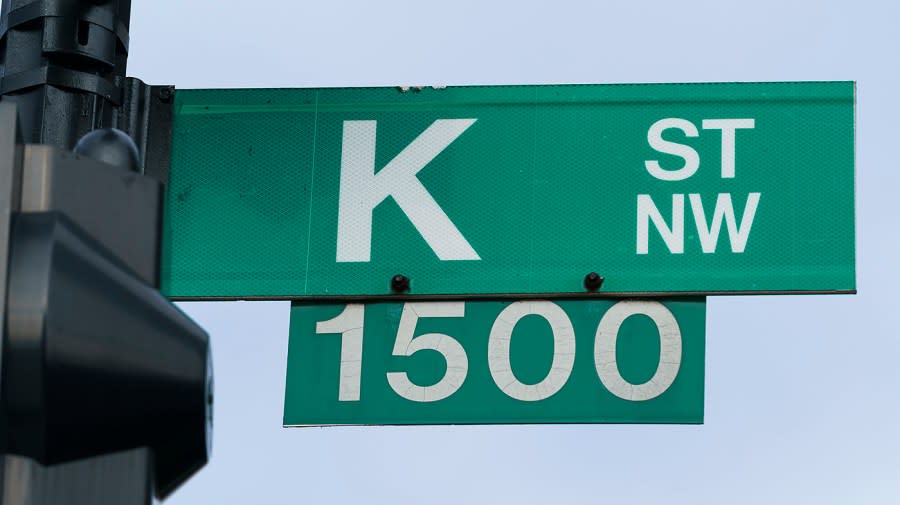K Street braces for potential shutdown

The federal government is set to run out of money at the end of the week, and lobbying and government affairs shops are busy preparing for a possible shutdown.
Lobbyists can’t do much except keep clients informed about what to expect if the government does shut down as they navigate uncertainty around tax credits, infrastructure investments and political stability.
The current crisis is not an interparty conflict, but an intraparty one, because a handful of House Republicans threaten to tank a stopgap bill that would fund the government past Sept. 30 over what they say is out-of-control federal spending.
“Learning from history and experience is important, but this is a very different shutdown from 2018,” Ryan Carney, a government affairs advisor at K&L Gates and a member of the firm’s Public Policy and Law practice, told The Hill in a phone interview.
It’s a “very uncertain time” for clients, Carney said, which is why K&L Gates set up a task force packed with professionals who have experience with government shutdowns to monitor developments.
As K Street awaits guidance from the Office of Management and Budget (OMB) on what agencies and offices would close, it is navigating questions about the implementation of the Inflation Reduction Act and infrastructure investments in the JOBS Act and the CHIPS and Science Act if the government were to shut down.
The OMB asked senior agency staff to review and update shutdown guidance Friday as it initiated preparations for a government shutdown. The OMB did not return The Hill’s request for comment on when to expect additional guidance.
The potential shutdown also seems to be sucking momentum away from K Street’s top legislative targets, namely the five-year reauthorization of the Farm Bill and the Federal Aviation Administration.
“During the shutdown, Congress certainly wants to be seen focusing on the shutdown,” Rich Gold, a partner at Holland & Knight who leads the firm’s Public Policy & Regulation Group, told The Hill in a phone interview.
Access to policymakers could tighten as Washington hunkers down for a shutdown, though every office is different.
“There are also questions about political stability going forward, and what that might look like after a shutdown and potentially after a resolution. The political environment is very volatile,” Matt Leggett, a partner at K&L Gates and a member of its shutdown task force, told The Hill in a phone interview.
Fitch Ratings downgraded the U.S. credit rating from “AAA” to “AA+” in August, citing the high risk of partisan battles over the debt ceiling dating back years. Fitch reportedly factored political instability reflected in the Jan. 6, 2021, insurrection at the Capitol into its downgrade.
The downgrade sparked outrage among policymakers in Washington, even as the U.S. narrowly avoided a default in May when House Speaker Kevin McCarthy (R-Calif.) and President Biden hammered out a debt ceiling deal.
But the concessions Republicans garnered may have emboldened GOP holdouts as appropriations debates drag on.
Trump voiced his support for the GOP holdouts Monday on Truth Social, saying that unless the hard-liners “get everything” they should “shut it down.”
“We’re dealing with the zombies from World War Z,” Gold said. “This is the first shutdown where the people who were shutting down the government don’t actually have a demand. They just want to shut down the government.”
The last government shutdown was the longest in history, stretching from late 2018 into early 2019 as former President Trump tried and failed to secure funding for the border wall after Democrats regained control of the House during the 2018 midterms.
The U.S. economy took a $3 billion hit over the course of the five-week partial shutdown, making an estimated 0.2 percent reduction in GDP during the first quarter of 2019, according to an analysis by the Congressional Budget Office.
The latest shutdown could be a full one, and the impact of a shutdown will also depend on how long it lasts.
“There will definitely be significant impacts, especially since we are expecting what could be a four-week shutdown,” Gold said.
A government shutdown could cost the U.S. economy $6 billion per week and shave 0.1 percent off GDP growth in the final quarter of the year, according to a recent estimate by EY-Parthenon, the strategic consulting arm of Ernst & Young.
“Our job is to provide context and analysis for what’s happening in the world,” Gold added.
“The fact that there’s a lot going on in the next couple of weeks is not necessarily any different than any other months. I think what makes it a little bit harder is the uncertainties.”
For the latest news, weather, sports, and streaming video, head to The Hill.

